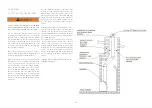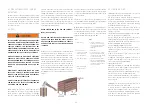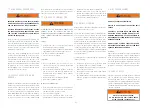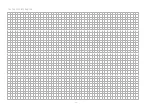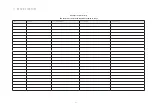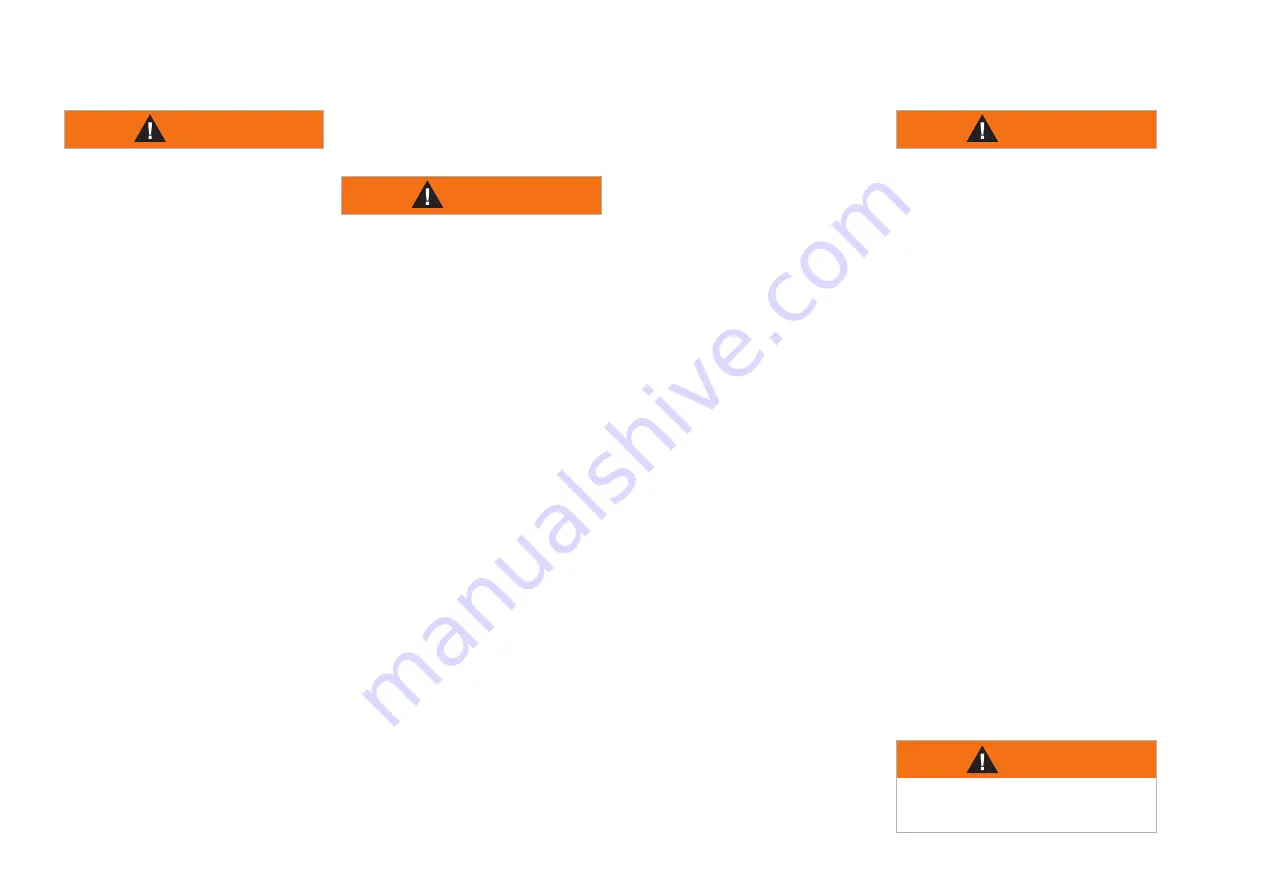
22
7.1 ASH REMOVAL PROCEDURES
WARNING
IMPROPER DISPOSAL OF ASHES RESULTS IN FIRES.
DO NOT DISCARD ASHES IN CARDBOARD BOXES.
DUMP IN BACK YARDS, OR STORE IN GARAGES.
IF USING A VACUUM TO CLEAN UP ASHES, BE SURE
THE ASHES ARE ENTIRELY COOLED. USING A VAC-
UUM TO CLEAN UP WARM ASHES COULD CAUSE A
FIRE INSIDE THE VACUUM.
Allow the ashes in your firebox to accumulate to a
depth of two or three inches; they tend to burn them-
selves up. When the fire has burned down and cooled,
remove any excess ashes but leave an ash bed approx-
imately 1” (25mm) deep on the firebox bottom to help
maintain a hot charcoal bed.
Shovel some ashes out through the door into a metal
container with a tight fitting lid. Leave an ash bed
approximately 1” (25mm) deep on the firebox bottom
to help maintain a hot charcoal bed. Keep the closed
container on a noncombustible floor or ground, well
away from all combustible materials. The ashes should
be retained in the closed container until all cinders
have thoroughly cooled. Cold wood ashes can be used
on the garden or in the compost.
7.2 CREOSOTE FORMATION AND
REMOVAL
When wood is burned too slow, it produces tar and other
organic vapors, which combine with expelled moisture
to form creosote. The creosote vapors condense in the
relatively cooler chimney flue of a slow-burning fire.
As a result, creosote residue accumulates on the flue
lining. When ignited this creosote makes an extremely
hot fire. The chimney connector and chimney should
be inspected at least once every two months during
the heating season to determine if a creosote buildup
has occurred. If creosote has accumulated it should be
removed to reduce the risk of a chimney fire.
7.3 RUNAWAY OR CHIMNEY FIRE
WARNING
A CHIMNEY FIRE CAN PERMANENTLY DAMAGE YOUR
CHIMNEY SYSTEM. THIS DAMAGE CAN ONLY BE
REPAIRED BY REPLACING THE DAMAGED COMPONENT
PARTS. CHIMNEY FIRES ARE NOT COVERED BY THE
WARRANTY.
CAUSES:
• Using incorrect fuel, or small fuel pieces which
would normally be used as kindling.
• Leaving the door ajar too long and creating extreme
temperatures as the air rushes in the open door.
• Improperly installed or worn gaskets.
• Creosote build up in chimney.
SOLUTIONS:
• Do not burn treated or processed wood, coal,
charcoal, coloured paper or cardboard. Do not burn
green or freshly cut wood.
• Be careful not to overfire the appliance by leaving
the door open too long after the initial start-up.
A thermometer on the chimney connector and/or
appliance top helps.
• Replace worn, dried out (inflexible) gaskets.
• Have chimney regularly cleaned.
IN CASE OF A CHIMNEY FIRE:
• Have a well understood plan for evacuation and
a place outside for everyone to meet. Prepare to
evacuate to ensure everyone’s safety.
• Close air control on appliance.
• Call local fire department. Have a fire extin-
guisher handy. Contact local authorities for further
information on how to handle a chimney fire.
• After the chimney fire is out, clean and inspect
the chimney or chimney liner for stress and cracks
prior to lighting another fire. Also check combusti-
bles around the chimney and the roof.
7.4 CHIMNEY CLEANING
Both the chimney and the appliance must be inspected
and cleaned at least once a year.
For serious wood burners, chimney cleaning must be
done as needed to avoid chimney fires; the venting
systems for controlled combustion appliances may
need cleaning as often as once a month. These rates,
however, depend on the burning habits of the individ-
ual operating the appliance. For example, it is possible
to clog a solid fuel appliance chimney in a few days
if slow, smoldering fires are burned and the chimney
is cold. NOTE: Appliances burned consistently without
hot fires may result in significant creosote accumula-
tions in the chimney.
Certain items and considerations are important in
chimney cleaning:
• Proper tools should be used, including a brush
specifically designed for chimney cleaning.
• The chimney connector and dampers as well as the
chimney should be cleaned.
• The appliance’s firebox and baffle system should
be cleaned if needed.
• The chimney should be inspected and repairs made
if needed, preferably by a qualified chimney sweep
or mason.
7
.5 GLASS REPLACEMENT
WARNING
DO NOT USE SUBSTITUTE MATERIALS
GLASS MAY BE HOT, DO NOT TOUCH GLASS UNTIL
COOLED.
CARE MUST BE TAKEN WHEN REMOVING AND
DISPOSING OF ANY BROKEN DOOR GLASS OR
DAMAGED COMPONENTS. BE SURE TO VACUUM UP
ANY BROKEN GLASS FROM INSIDE THE APPLIANCE
BEFORE OPERATION.
DO NOT STRIKE, SLAM OR SCRATCH GLASS. DO
NOT OPERATE APPLIANCE WITH GLASS REMOVED,
CRACKED, BROKEN OR SCRATCHED.
Installation:
Remove the door from the stove and remove the glass
retainer. Position the 4 mm ceramic Schott Robax glass
in the door, make sure that the glass gasket will prop-
erly seal your unit, and replace the retainer, it should
rest on the gasket not the glass. Tighten securely, but
do not wrench down on the glass as this may cause
the glass to break. Replacement Glass Part as for unit.
7.6 CARE OF GLASS
If the glass is not kept clean permanent discolouration
and / or blemishes may result. Normally a hot fire
will clean the glass. The most common reasons for
dirty glass include: not using sufficient fuel to get the
appliance thoroughly hot, using green or wet wood,
closing the draft so far that there is insufficient air for
complete combustion.
WARNING
HOT GLASS WILL CAUSE BURNS.
DO NOT TOUCH GLASS UNTIL COOLED. NEVER
ALLOW CHILDREN TO TOUCH GLASS.
Summary of Contents for Insert-600
Page 26: ...26 10 6 FOR YOUR INFORMATION...







